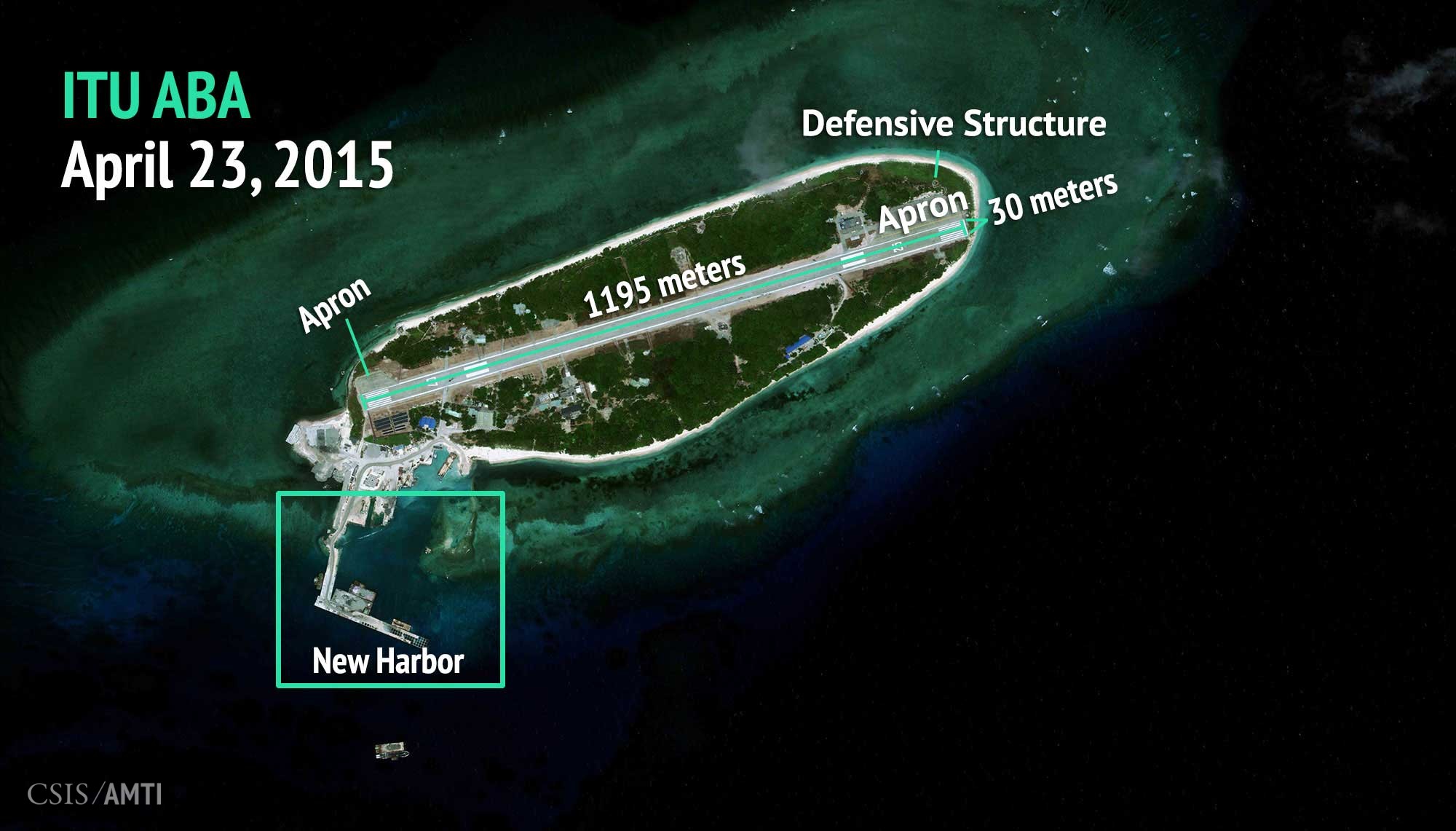I visited Itu Aba, or Taiping Island in Chinese, on December 12 alongside a group of high-ranking Taiwanese government officials to attend the opening ceremonies for new piers and a lighthouse. It was my fourth visit to the island.
These visits provided me an opportunity to answer for myself the following questions being asked of a tribunal considering the Philippines’ case against China at the Permanent Court of Arbitration in The Hague: Is Itu Aba an “island” or “rock” under Article 121(3) of the United Nations Convention on the Law of the Sea (UNCLOS)? In other words, is it capable of sustaining human habitation or economic life of its own? And as a result, is the feature entitled to a 200 nautical mile exclusive economic zone (EEZ) and continental shelf?
The government of the Philippines argues in its arbitration case that none of the features in the Spratly Islands are capable of sustaining human habitation or economic life of their own, and are therefore legally “rocks.” This includes Itu Aba, the largest feature in the Spratlys. Accordingly, none of the features generate maritime entitlements beyond a 12-nautical-mile territorial sea. The Philippines’ claim is based on a number of arguments, including: (1) there is no fresh water on the island suitable for drinking or capable of sustaining a human settlement; and (2) there is no soil on the island capable of facilitating any kind of agricultural production that could sustain human habitation.
In accordance with Article 9 of Annex VII of UNCLOS, “[b]efore making its award, the arbitral tribunal must satisfy itself not only that it has jurisdiction over the dispute but also that the claim is well founded in fact and law.” Is the Philippines’ claim regarding fresh water and soil on Taiping Island well founded in fact? In my experience, no. On my four visits to Itu Aba, I ate crops grown on the island and drank from the skimming water well located near its small hospital.
During the second oral hearing in the arbitration case held in November 2015, the Philippines cited as the “most authoritative evidence” in support of its claim regarding the lack of fresh water and topsoil on Itu Aba a 1994 article entitled “The flora of Taipingtao [Itu Aba].” The article was written by three Taiwanese botanists and appeared in Taiwania: International Journal of Life Sciences, published by National Taiwan University’s College of Life Science. The research behind the article focused on the flora on Itu Aba, not the quality of water or availability of topsoil. The three authors are botanist, not experts on water quality or soil, and the views expressed in the article do not in any way represent those of Taiwan’s government. Given these facts, how can the article be cited as authoritative evidence that there is no fresh water or soil on Itu Aba?
It is interesting to note the reasons given by Professor Clive Schofield of the University of Wollongong, Australia, who spoke as an expert witness during the oral hearings at The Hague, to explain his change of opinion concerning the legal status of Itu Aba. Schofield previously wrote that “water supply might be one of the most important factors in clarifying the situation [legal status of an island or a rock]. This is because the existence of fresh water is an important indication that human habitation could be sustained.” At that time, he was of the opinion that Itu Aba “may conceivably” be considered a full-fledged island. But during the hearing, Schofield said his “firm belief” is that Itu Aba is a “rock.” Why the sudden change? It seems he accepted the so-called “most authoritative evidence” provided by the Philippines’ legal team.
It is not convincing to cite the 1994 article in support of the Philippines’ claim that there is no drinkable water or topsoil on Itu Aba. Schofield accepted this publication at its face-value without any verification. In addition, he admitted that he has not had access to Itu Aba. But I suspect he would change his opinion if he were invited to visit the island and, like me, had the chance to drink fresh water from the skimming well and eat a lunch of cooked vegetables and fruits picked from the island’s garden.
During my four visits to Itu Aba, I have seen indigenous plants that are more than 32 feet (10 meters) tall. There is a nearly 4,000-foot (1,200-meter) runway, two piers, a guest-house building, a postal office, a small hospital, a big agricultural garden, livestock, and a temple. In addition to drinkable water that is available at the four skimming wells, indigenous soil on the island has also long been used for growing fruits, including banana, coconut, and papaya, and vegetables such as wild bitter squash, loofah, and cabbage. It should also be noted that internet and cell phone access are available on Itu Aba, along with solar power for electricity.
If the five arbitrators deciding the South China Sea case were invited to conduct a visit to Taiping Island, I suspect it would be very helpful in the tribunal’s efforts to meet the requirement under Article 9 of Annex VII of UNCLOS to “satisfy itself not only that it has jurisdiction over the dispute but also that the claim is well founded in fact and law.”
